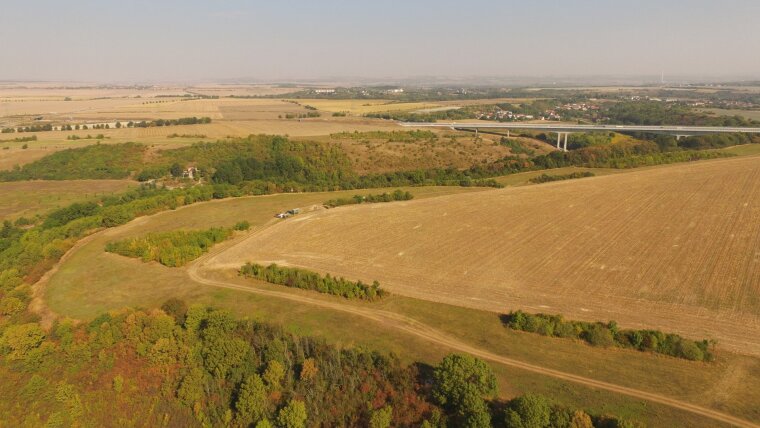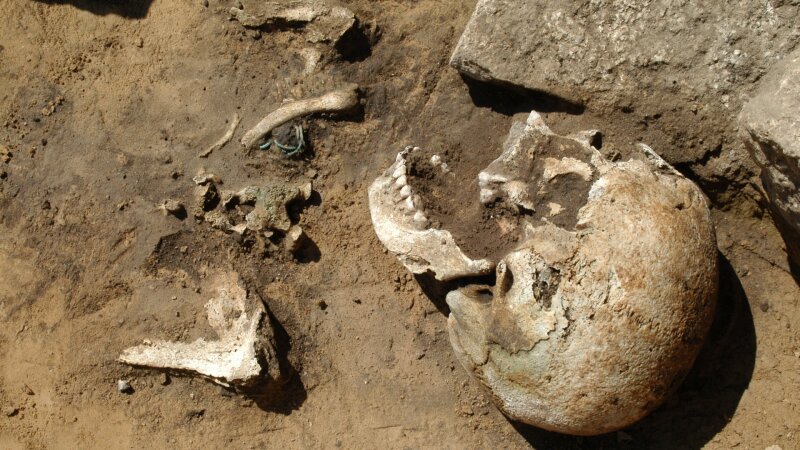
Description
The key issue of the project "Ritual and biography: Late Bronze Age inhumations and the performance of death in graves and settlements in the central place of Kuckenburg (Unstrut group)" is the exceptional Late Bronze Age (LBA) micro-region Kuckenburg near Querfurt in Saxony-Anhalt, Germany (Unstrut group). Whereas the LBA witnessed in Central Europe on a broad scale a ritual standardization with the spread of cremations, this practice was not adopted in the Unstrut group of Central Germany for half a millennium. Instead, inhumations continued to be practised.
With this project we aim at a conclusive understanding of this strong funerary conservatism, and the wide range of mortuary rituals witnessed in the Unstrut group: Especially the temporal and spatial coexistence of burials on graveyards with the deposition of human corpses in settlement pits or of skulls and intentionally dismembered body parts in ditches and pits, make this phenomenon particularly enigmatic.
The micro-region provides ideal opportunities to deal with these phenomena: The remains of almost 300 unburnt individuals are the most extensive complex of human skeletal material from the LBA in Central Europe. Moreover, the micro-region comprises three mortuary areas: a fortified hillfort settlement, a normal settlement, and a large biritual graveyard. As large parts of the complex still await analysis, it offers the unique opportunity for a multidimensional bioarchaeological study of LBA burial practices, and their interdependencies to cultic, social, and economic behaviour.
While archaeology, genetics, isotope analysis, and physical anthropology make possible an individual approach to the deceased, botany and archaeozoology together with archaeology contribute significantly to the local and regional influencing factors. With the present project, we are thus committing to a multilevel analytical and conceptual framework for a joint evaluation of the various datasets within the framework of three central levels of analysis: Funerary practices, biographies, and influencing factors on biographies and practices.
Skull with green colouring from feature 5041 in the Esperstedt graveyard.
Foto: Landesdenkmalamt Sachsen-AnhaltProjektleiter
Peter Ettel, Prof. Dr. phil. habil (FSU), Jena; Wolfgang Haak, Dr. (MPI Leipzig)Externer Link; Enrico Paust, Dr. (FSU), Jena; Patrick Roberts, Dr. habil. (MPI Jena)Externer Link; Florian Schneider, PD Dr. habil (FSU).
Bibliography
Ettel/Paust 2020: P. Ettel/ E. Paust, Spätbronzezeitliche Schädeldeponierungen auf der Höhensiedlung Kuckenburg bei Esperstedt, Saalekreis. In: H. Meller/ R. Risch/ K. W. Alt/ F. Bertemes/ R. Micó (eds.), Rituelle Gewalt - Rituale der Gewalt/Ritual Violence - Rituals of Violence. 12. Mitteldeutscher Archäologentag vom 10. bis 12. Oktober 2019 in Halle (Saale). Tagungen des Landesmuseums für Vorgeschichte Halle 22 (Halle 2020) 701–710.
Ettel/Paust/Schneider 2019: P. Ettel/ E. Paust/ F. Schneider, Kuckenburg – eine Höhensiedlung in Mitteldeutschland – Ein Beitrag zu Höhensiedlungen, Körpergräbern und Skelettfunden im Siedlungskontext der Spätbronzezeit. In: M. Freudenreich/ P. Fütterer/ A. Swieder (eds.), WegBegleiter. Interdisziplinäre Beiträge zur Altwege- und Burgenforschung. Festschrift Bernd W. Bahn zu seinem 80. Geburtstag (Langenweissbach 2019) 243–268.
Ettel et al. 2023: P. Ettel/ E. Paust/ W. Haak/ M. Himmel/ P. Roberts/ J. Zech, Die Kuckenburg bei Esperstedt und ihre Toten – bioarchäologische Untersuchungen an Sonderbestattungen aus einer spätbronzezeitlichen Höhensiedlung. In: K. Massy, J.-H. Bunnefeld, C. Horn (eds.), Soziale Hierarchien zwischen Tradition und Innovation in der Bronzezeit Europas. Beiträge zur Ur- und Frühgeschichte Mitteleuropas 106 (Langenweissbach 2023) 363–376.
Haak/Krause 2020: W. Haak/ J. Krause, Genomweite Daten prähistorischer Individuen aus dem Mittelelbe-Saale-Gebiet. In: H. Meller/ M. Schefzik (eds.), Die Welt der Himmelsscheibe von Nebra – Neue Horizonte. Begleitband zur Sonderausstellung im Landesmuseum für Vorgeschichte Halle (Saale) (Halle, Saale 2020).
Orfanou et al. 2024: E. Orfanou/ B. Zach/ A. Rohrlach/ F. Schneider/ E. Paust/ M. Lucas/ T. Hermes/ J. Ilgner/ E. Scott/ P. Ettel/ W. Haak/ R. Spengler/ P. Roberts, Biomolecular evidence for changing millet reliance in Late Bronze Age Central Germany. Scientific Reports.

